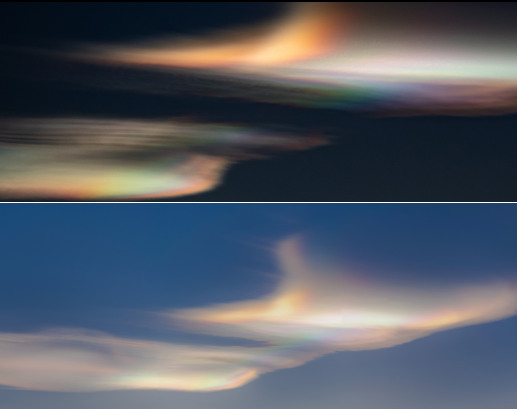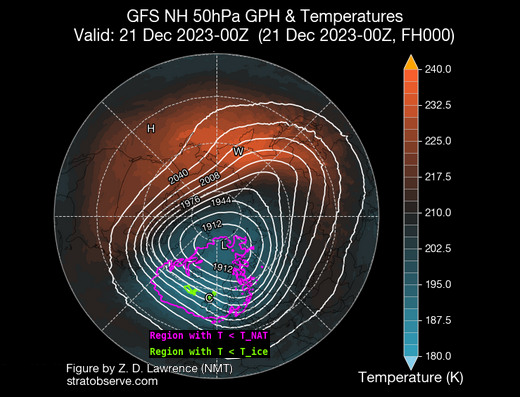Jan. 29, 2024: Energetic protons from the sun are striking the top of Earth’s atmosphere today following a strong solar flare during the early hours of Jan. 29th. This is called a “radiation storm,” and it is currently a category S2 event. Such a storm can cause elevated levels of radiation in airplanes flying over Earth’s poles and unwanted glitches in the electronics of Earth-orbiting satellites.
NASA’s Solar Dynamics Observatory recorded the M6.8-class solar flare, which started this storm:
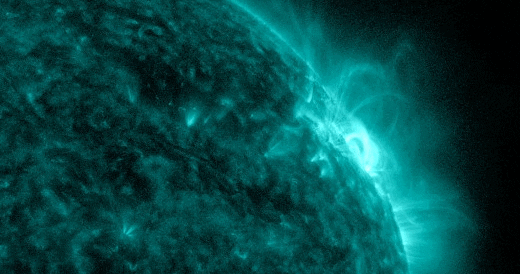
The source of the flare was departing sunspot AR3559. Not all flares cause radiation storms, but this one did because the sunspot is unusually well connected to Earth.
That may seem counterintuitive, because the sunspot is not directly facing our planet. However, when sunspots are near the sun’s western limb (as AR3559 is), they can link to Earth magnetically. Take a look at this diagram, and you’ll understand why. It’s called “the Parker Spiral.” Protons accelerated by the flare are now following the Parker Spiral toward Earth and raining down on our atmosphere.
NOAA’s GOES-18 satellite is recording the protons as they pass by en route to Earth:
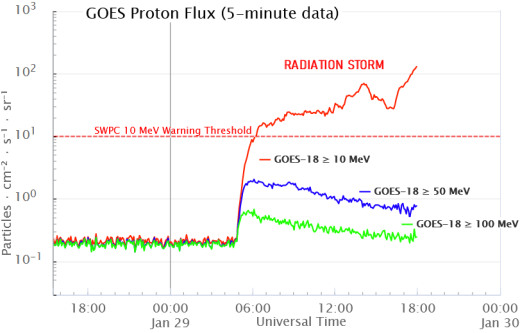
The three colors represent different energy ranges. Blue and green are especially noteworthy; they trace the most energetic protons capable of penetrating the metal hulls of satellites and aircraft. A significant pulse of these “hard” protons was recorded in the hours immediately after the flare.
The explosion also hurled a CME into space, shown here in a coronagraph animation from the Solar and Heliospheric Observatory (SOHO):
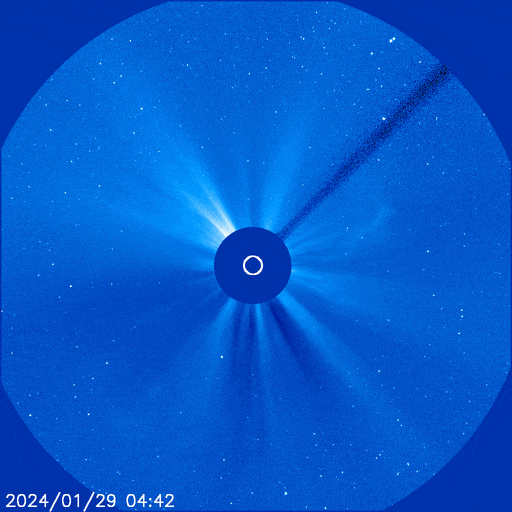
The many speckles in the animation are solar protons striking the spacecraft’s camera. It is a sign and side-effect of the radiation storm. A NASA model of the CME suggests it will graze Earth during the early hours of Jan. 31st. Confirmation awaits independent modeling by NOAA.
